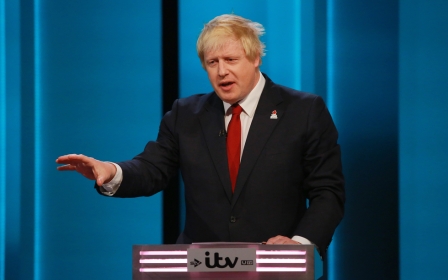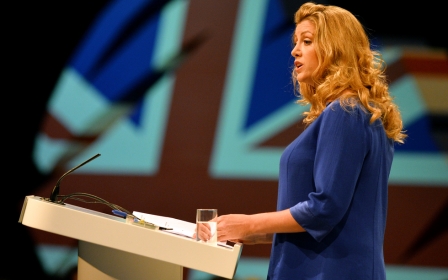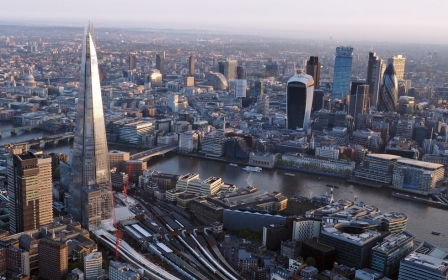Debate around immigration has made Britain a nastier place

Quite some time ago, well before the date for the EU referendum was set, I first became very concerned about the direction we were heading – that it was, yes, getting nasty out there. This was triggered by Katie Hopkins’s deplorable piece published in The Sun in which she described drowning refugees as cockroaches.
That article was widely condemned. But that does not do away with two facts: not only that Hopkins thought it was okay to write her piece, but also that The Sun thought it was okay to publish it. At the time, much was made of not taking Hopkins seriously. That one had best ignore her. I disagree: doing so is exactly where the problem starts.
But even if we were to disregard Hopkins’s piece as one at the extremest of fringes, there are further examples where the kind of rhetoric Hopkins used began to go mainstream – and not just in the UK. It is a rhetoric based, in essence, on the simplest of ideas: it casts groups of people as “the other” – essentially an “enemy” – against which one’s own group can define itself. There is a long history of the use of “the other” in this way (see for instance Linda Colley’s points about blaming the French in her book Britons: Forging the Nation).
For the idea of “the other” to work well, it is particularly effective to dehumanise it. Referring to migrants and refugees in plural terms only, without names but with blurred faces – or represented only by dirty footsteps on a red background. This imagery, language and linguistic behaviour has underpinned much of the public and political discourse in recent months. Think, for example, of David Cameron’s use of “swarm”, or the imagery invoked by Foreign Secretary Philip Hammond when he spoke of “marauding” migrants.
And then we all suddenly paused. Looked in shock and horror at the dead body of a small boy, a Syrian refugee, washed ashore on the coast of Turkey. Yet while there was an immediate outcry, while Alan Kurdi’s tragic death has changed the world, it has not changed perceptions and discourses long-term.
Six months into 2016 and we have seen Austria failing to elect a far-right president by the slimmest of margins – and we may not have heard the last of it yet. The Front National continues to do well in France, and developments in Germany – my own country of birth – are also very worrying.
American nightmare
There clearly is a rise of far-right movements across Europe – and it is not too far-fetched to say that this relates to wider circumstances that resemble those of the 1930s. The economic downturn in particular is a key parallel, but so is the nastier public discourse. This is coupled with the popularity of anti-establishment views, a trend strongest in the United States. Although diametrically opposed, Democrat Bernie Sanders (a staunch advocate of American socialism) and Republican Donald Trump are united in their status as “outsiders” – one factor that might explain why some Sanders’ supporters consider switching to Trump rather than vote for Hillary Clinton.
Trump plays a wider role: his hate-stirring language and outright racism, applauded by thousands and awarded with enough votes to secure him the Republican presidential nomination, has contributed to making it socially acceptable to use race and ethnicity in arguments. What message is sent by calling Trump out as a racist, as Paul Ryan did, only to then say that this changes nothing about the endorsement? This is hypocrisy at its worst.
We have a similar example closer to home. While Boris Johnson condemned UKIP’s “Breaking Point” poster and sought to distance Vote Leave from UKIP leader Nigel Farage’s campaign, I must ask: ultimately, what exactly is the difference between the “Breaking Point” poster and Vote Leave’s anti-Turkey poster? For sure, UKIP’s poster is worse in the immediate imagery it draws on and associations it invokes – parallels to Nazi propaganda are bone-chilling. But the message is, essentially, the same.
Moreover, while the “Breaking Point” poster is among the worst I have seen, it is by no means the first seeking to invoke anti-migrant feelings in this way. Countless British newspapers have stirred them for months by invoking fear - and often a fear based on associations with war. Think, for instance, of The Sun’s cover headline: “Migrant army on beaches of D-Day.”
The accompanying text makes it clear that the invocation of war imagery lies at the heart: “Migrants are planning to invade Britain from the D-Day beaches of Normandy,” having gathered “along the French coastline used by Allied troops to free Europe from Nazi tyranny in 1944.” Anti-German sentiment has shone through in the referendum campaign more than once, both in more populist terms and in political arguments.
None of this means that we should not talk about immigration: there is absolutely nothing wrong about that – as a migration historian I do it every day. But what we have seen in the EU referendum debate is not a discussion. For the most part it has been xenophobic hate-stirring and we have to recognise this for what it is. The archbishop of Canterbury, Justin Welby, was right to note that some of the comments we are hearing legitimise racism.
This does not mean that everyone who supports a leave vote is xenophobic or a racist. But we must recognise that the widespread acceptance of xenophobic headlines and the use of anti-migrant sentiments raises questions about the wider implications of a leave vote were it to happen. Importantly, and here is where I think the real danger lies, this does not only relate to migrants, but could have much wider repercussions for minorities in Britain such as Muslims and Jews.
The ramifications are already here. While I do not want to suggest that social media platforms are fully representative of wider developments in society, it certainly is worth noting that a notably nastier tone has taken hold on Facebook and Twitter. From Remain supporters being added to lists called “Traitors2Britain” to my own experiences of abuse, the evidence is far-ranging.
So I am afraid that, yes, Britain has become nastier.
But do not feel ashamed, do not apologise. Increased nastiness is, in itself, not the issue: what is is whether we will let it remain that way, or whether we will stand together and reclaim the tolerant, open and welcoming country Britain has been for a long time.
And thinking of the devastating murder of MP Jo Cox, when, if not now, will we “all unite”, in the words of her husband Brendan, “to fight against the hatred that killed her. Hate doesn’t have a creed, race or religion, it is poisonous.”
- Dr Tanja Bueltmann is Associate Professor, Northumbria University, Newcastle, UK. You can follow her on Twitter @scotsdiaspora This article was first published at TheConversation.com/uk.
The views expressed in this article belong to the author and do not necessarily reflect the editorial policy of Middle East Eye.
Photo: British artist Frank Shepherd puts the finishing touches to a giant effigy of Katie Hopkins in Edenbridge, Kent, southeast England, on 30 October, 2013 (AFP).
New MEE newsletter: Jerusalem Dispatch
Sign up to get the latest insights and analysis on Israel-Palestine, alongside Turkey Unpacked and other MEE newsletters
Middle East Eye delivers independent and unrivalled coverage and analysis of the Middle East, North Africa and beyond. To learn more about republishing this content and the associated fees, please fill out this form. More about MEE can be found here.





